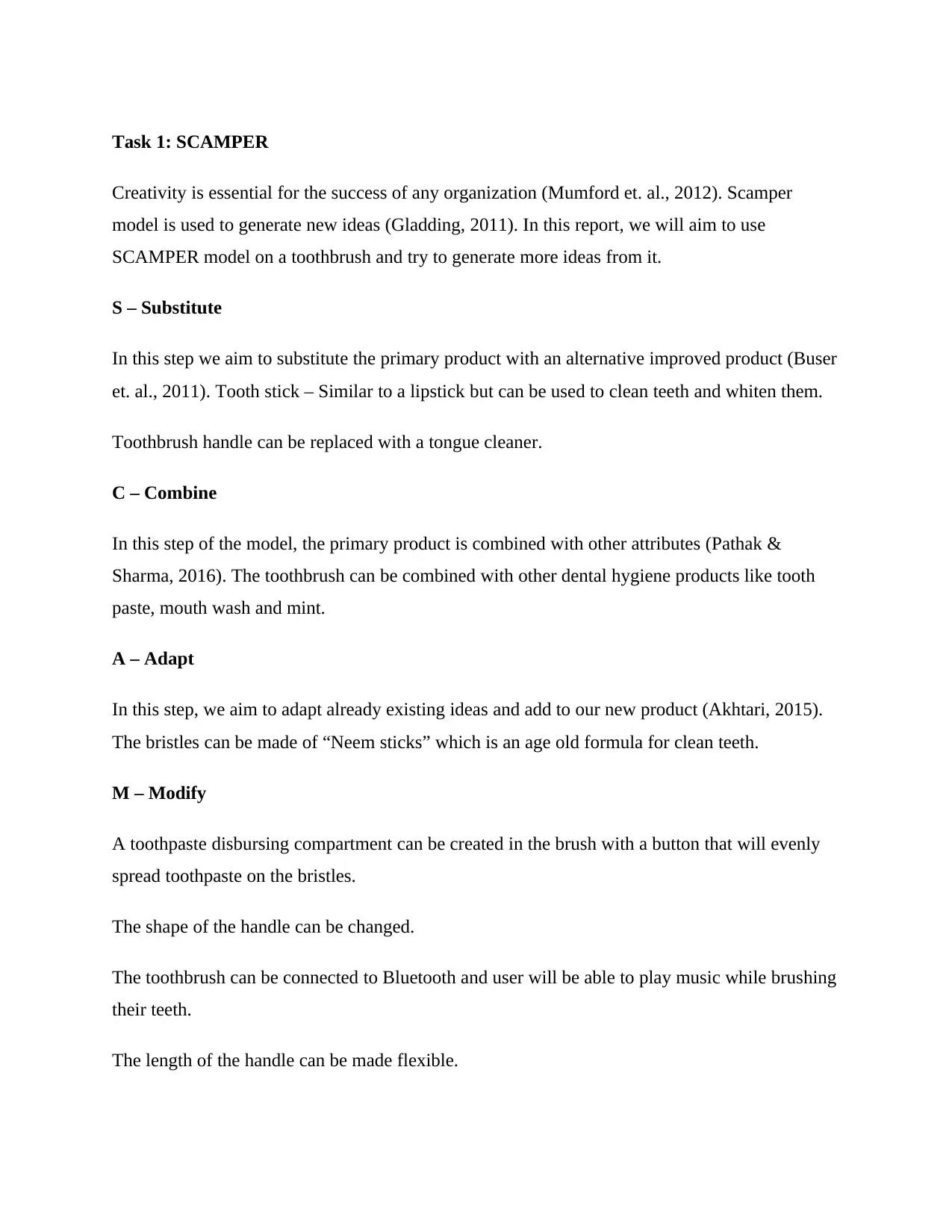Creative Toothbrush Redesign: Using SCAMPER Model for Innovation
VerifiedAdded on 2023/06/11
|5
|1051
|127
Creative Assignment
AI Summary
This assignment focuses on redesigning a toothbrush using the SCAMPER model to generate innovative ideas. Task 1 involves applying the SCAMPER technique (Substitute, Combine, Adapt, Modify, Put to other uses, Eliminate, Rearrange) to brainstorm improvements for the toothbrush design. Various ideas are generated, such as a tooth stick combining teeth cleaning and whitening, integrating a tongue cleaner, incorporating Neem stick bristles, adding a toothpaste dispensing compartment, Bluetooth connectivity for music, and flexible handle length. Task 2 selects the tooth stick idea as the best, highlighting its multipurpose functionality, portability, natural minty flavor, teeth whitening ability, and potential lip moisturizer component. The final design incorporates flexible handle length, teeth whitener, mouthwash, bamboo bristles, a tiny tongue cleaner, and Bluetooth connectivity for music. The assignment aims to enhance dental hygiene through a single, versatile tool.
1 out of 5









![[object Object]](/_next/static/media/star-bottom.7253800d.svg)